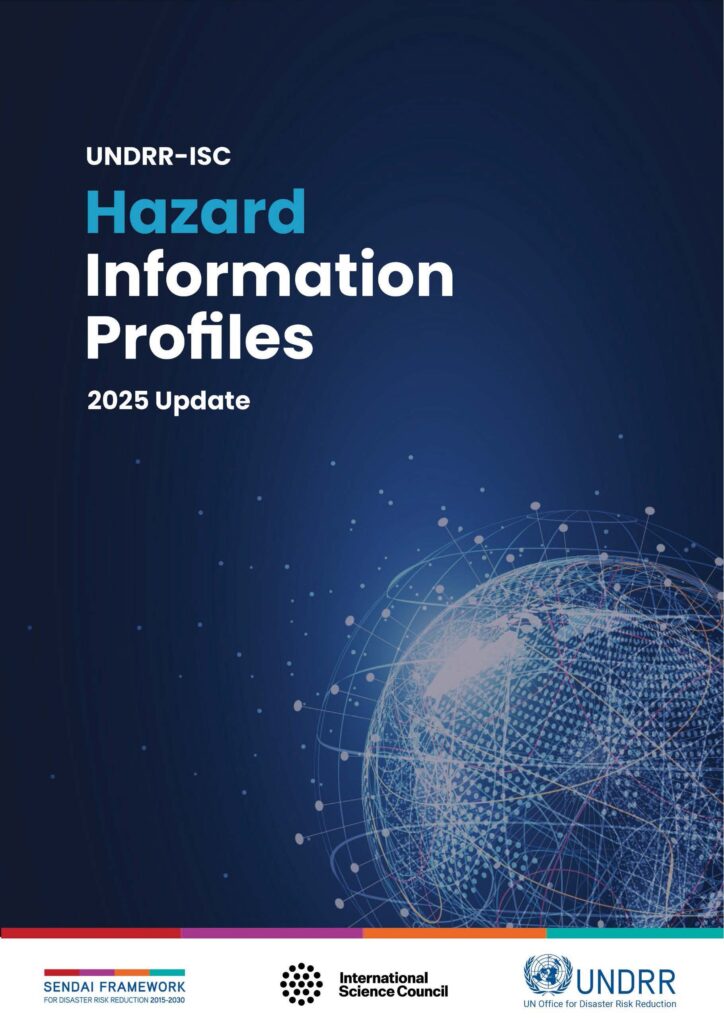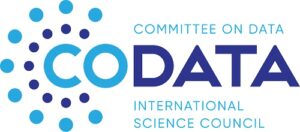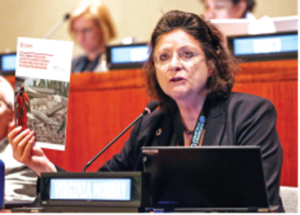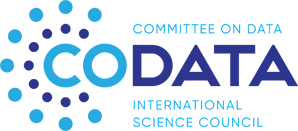
The United Nations Office for Disaster Risk Reduction (UNDRR) and the International Science Council (ISC) have released an updated edition of the UNDRR-ISC Hazard Information Profiles (HIPs). This comprehensive guide offers clear, standardized information on 281 hazards – from wildfires and earthquakes to cyberattacks and pandemics.
Widely used by governments, UN agencies, researchers, and disaster practitioners, the HIPs support more coherent risk analysis, planning, and reporting – strengthening the implementation of the Sendai Framework, the Sustainable Development Goals, and climate adaptation strategies.
Comprising a technical report and the Updated Hazard Information Profiles, the new edition reflects the complex and interconnected nature of today’s global risk landscape. Hazards increasingly occur together, cascade across systems, and amplify one another. In response, the updated profiles emphasize a multi-hazard approach—critical for effective early warning systems, emergency planning, and disaster resilience.
The technical report and the fully updated HIPs can now be consulted online. An official launch in August will be accompanied by a webinar. By the end of September, a fully machine-readable version will be made available!
Originally launched in 2021 as the first resource of its kind, the UNDRR-ISC Hazard Information Profiles provide an authoritative technical foundation for disaster risk reduction efforts worldwide. This updated edition builds on that foundation with:
- 281 reviewed hazards across 8 types and 39 clusters
- Clearer articulation of hazard interactions and multi-hazard scenarios
- User-informed revisions and new content to support real-world planning and response
The revision process engaged over 270 experts, reviewers, and users from across sectors and regions. A dedicated User Group, Multi-Hazard Group, and Machine Actionability Group ensured the profiles remain practical, future-ready, and inclusive of diverse perspectives and needs.
 Although the HIPs are already used in databases and information management systems to provide a standardised list of hazards, such use will be greatly facilitated by making them available as a machine actionable, online resource. CODATA is now working with UNDRR and other partners to ensure that the HIPs are made more readily reusable in software-based solutions and services following current good practice and the recommendations made in ‘10 Simple Rules for Making a Vocabulary FAIR’. This means making them available online in a way that facilitates the referencing of individual HIPs by means of a unique, persistent and resolvable identifier, and encoding the semantics and structure of the HIPs in a standardised way (using SKOS, the W3C’s standard for describing such concept schemes). This makes it easier to use the HIPs in disaster events and loss accounting databases in a consistent way, streamlining disaster-related statistics. Furthermore, their publication in a canonical, machine-readable form, and their increased uptake in disaster-related data, will make it easier for the HIPs to be used in the training of LLMs. Equally importantly, the machine actionability process will clarify the usage rights of the HIPs, encouraging innovation in research, administrative, operational, and commercial sectors.
Although the HIPs are already used in databases and information management systems to provide a standardised list of hazards, such use will be greatly facilitated by making them available as a machine actionable, online resource. CODATA is now working with UNDRR and other partners to ensure that the HIPs are made more readily reusable in software-based solutions and services following current good practice and the recommendations made in ‘10 Simple Rules for Making a Vocabulary FAIR’. This means making them available online in a way that facilitates the referencing of individual HIPs by means of a unique, persistent and resolvable identifier, and encoding the semantics and structure of the HIPs in a standardised way (using SKOS, the W3C’s standard for describing such concept schemes). This makes it easier to use the HIPs in disaster events and loss accounting databases in a consistent way, streamlining disaster-related statistics. Furthermore, their publication in a canonical, machine-readable form, and their increased uptake in disaster-related data, will make it easier for the HIPs to be used in the training of LLMs. Equally importantly, the machine actionability process will clarify the usage rights of the HIPs, encouraging innovation in research, administrative, operational, and commercial sectors.
“This updated edition reflects what we’ve learned: hazards are not standalone events. They are part of a complex web of risk. By bringing together diverse expert and user input, we’ve made these profiles more actionable, more interconnected, and more immediately useful,” said Virginia Murray, Chair of the UNDRR-ISC Hazard Information Profiles Steering Group and a member of the CODATA Executive Committee.
The HIPs offer standardized definitions and key characteristics for a wide range of hazards across key clusters:
- Meteorological and Hydrological
- Extraterrestrial
- Geological
- Environmental
- Chemical
- Biological
- Technological
- Societal
A number of colleagues active in CODATA contributed to the revision: including Richard Hartshorn, CODATA Vice President who chaired the work to update the Chemical Hazards, and Bapon Fakhruddin, co-chair of the CODATA Task Group on FAIR Data for Disaster Risk Reduction. Advisors from the CODATA Expert Community and Secretariat on the process to make the HIPs machine-actionable include Arofan Gregory, Slava Tikhonov, Pascal Heus, Stephen Richard, Matti Heikkurinen and Simon Hodson.
“From local governments to humanitarian agencies, the need for consistent, science-based hazard information is universal. These profiles reflect the best available scientific understanding of hazards and offer a foundation for evidence-based policies that reduce risk and build resilience,” said Salvatore Aricò, CEO, International Science Council.
“Reliable and standardized hazard data are essential for informing disaster risk reduction strategies. This update helps countries implement the Sendai Framework for Disaster Risk Reduction to reduce losses by 2030,” said Kamal Kishore, the Special Representative of the United Nations Secretary-General for Disaster Risk Reduction.
